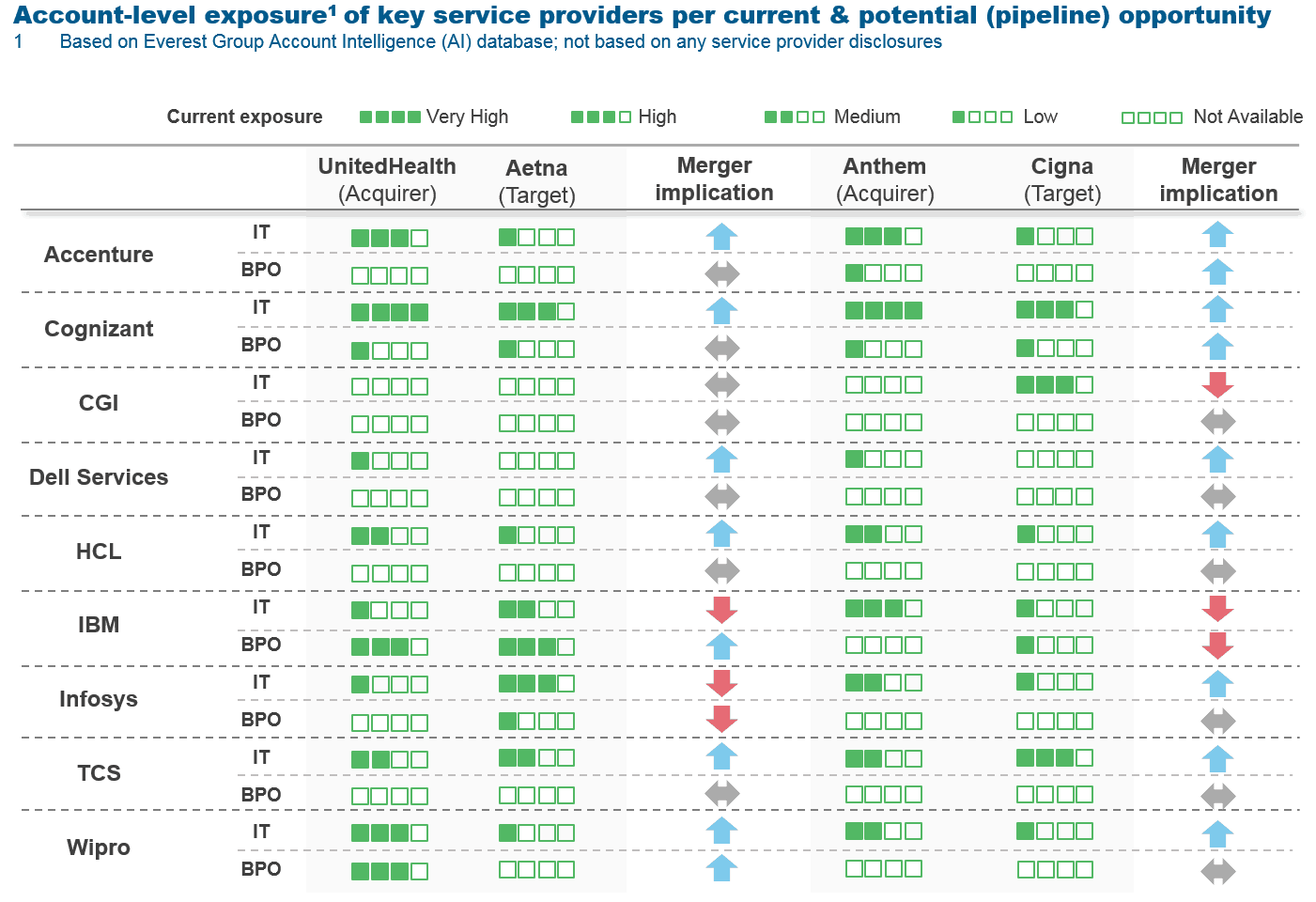
Rumor mills are buzzing over the potential acquisition approaches made by suitors United Health and Anthem for Aetna and Cigna, respectively. The Affordable Care Act (ACA) and the growing focus on consolidation to drive health insurance premium/cost rationalization have led to these tactical maneuvers. While the equity analysts and investment banks have already started to split hairs on the potential implications for capital markets and stocks, our focus here is on the implications these mergers may have on the IT/BPO services market.
These four companies – Aetna, Anthem, Cigna, and UnitedHealth – are star accounts for some of the largest IT service providers that focus on the payer industry. Some service providers have so much revenue exposure to these accounts that their healthcare revenues can take a hit of over 200 basis points, simply as a consequence of IT budget realignments or vendor consolidation.
Impact on IT services
These potential mergers may lead to the following key transformational IT implications:
- Systems and applications integration: Merging organizations reduce redundancy by retiring transactional systems and applications, and opting for integrated systems that can work across the merging entities. The biggest impact will likely be on claims, members, and product rationalization initiatives
- Database and datawarehouse consolidation: This is one of the biggest imminent implications, as some of these organizations (especially Anthem) have gone through a decade long initiative to create an enterprise view of organizational data. Going through another round of database integration will be an imperative hard to push to a future date
- Infrastructure rationalization: These are huge capital assets, and mergers often present an opportunity to divest some of these assets in favor of cloud-based (most likely private) services
- Vendor rationalization: There are likely to be significant vendor redundancies, given that most of these organizations have mature vendor portfolios.
Implications for service providers
- The most likely beneficiaries of these mergers will be service providers that have systems experience across both the acquiring and target entities, as this will help with any integration initiative
- The second most likely beneficiaries will be service providers that are strongly entrenched in one of the entities and have indispensable systemic knowledge. However, given the potential hazard of these systems being retired as part of redundancy rationalization initiatives, these entrenchments can also be huge risks for these service providers
- Competitive presence will also be a key differentiator. Service providers with smaller visibility into these accounts may find their portfolios being overtaken by competitors with wider system coverage and presence in these accounts. Organizations today do not fear putting all their eggs in one basket. In fact, they rely a lot on service partners that will not only share their risk but also be strong partners in their transitional initiatives.
The following image illustrates the current exposure of key service providers in these four entities. As you see, these mergers may be beneficial for most of these large service providers. However, a few, such as Infosys in UHG-Aetna, CGI in Anthem-Cigna, and IBM in both UHG-Aetna and Anthem-Cigna, may have at-risk portfolios given competitive underpinnings and systemic maturity of the acquirers.
We’ll be reporting our views on this story as it unfolds, so keep watching this space.











